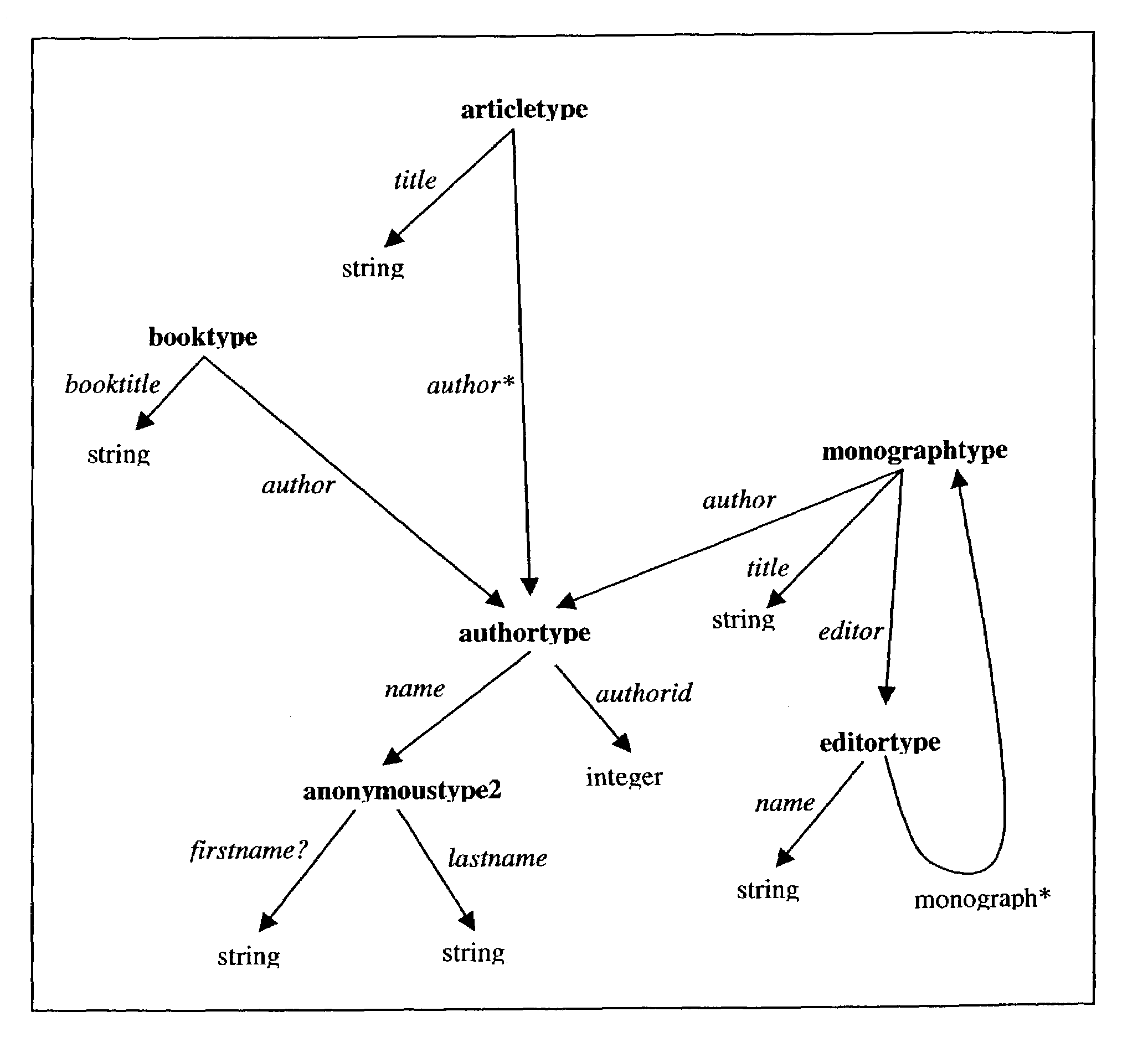Method for storing XML documents in a relational database system while exploiting XML schema
a relational database and document technology, applied in relational databases, web data retrieval, instruments, etc., can solve the problems of not handling (i) simplifying and the native xml database system does not harness the sophisticated storage and query capability already supported, so as to simplify complex xml schema types
- Summary
- Abstract
- Description
- Claims
- Application Information
AI Technical Summary
Benefits of technology
Problems solved by technology
Method used
Image
Examples
Embodiment Construction
[0029]We first describe the proposed technique for relational schema generation and XML document shredding by considering only the basic XML schema features, which includes the specification of complex, potentially recursive data types. We subsequently generalize this technique to handle other advanced XML Schema features, such as inheritance, equivalence classes, order, integrity constraints, and wild card specifications.
[0030]The following method steps describe the high-level algorithm for relational schema generation and XML document shredding considering only the basic XML schema features:[0031]1) Simplify the representation of complex XML Schema types for efficient translation into relations.[0032]2) Process the simplified XML Schema graph and generate a relational schema, handling nested XML elements, recursion, and data types.[0033]3) Shred XML documents into relations based on the relational schema generation used in Step 2.
[0034]Each of the steps above are described now in ...
PUM
 Login to View More
Login to View More Abstract
Description
Claims
Application Information
 Login to View More
Login to View More - R&D
- Intellectual Property
- Life Sciences
- Materials
- Tech Scout
- Unparalleled Data Quality
- Higher Quality Content
- 60% Fewer Hallucinations
Browse by: Latest US Patents, China's latest patents, Technical Efficacy Thesaurus, Application Domain, Technology Topic, Popular Technical Reports.
© 2025 PatSnap. All rights reserved.Legal|Privacy policy|Modern Slavery Act Transparency Statement|Sitemap|About US| Contact US: help@patsnap.com



